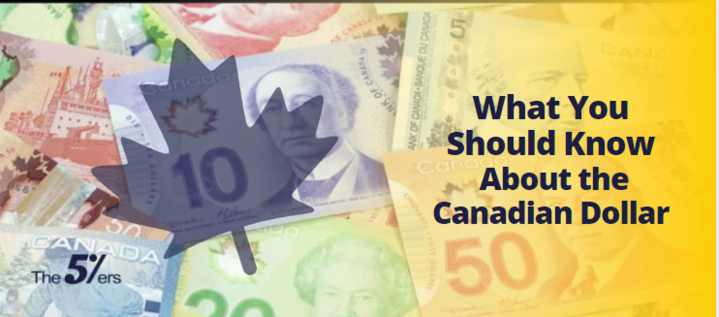What You Should Know About The Canadian Dollar

Although the Canadian economy according to GDP is only the 10th largest in the world, the Canadian Dollar ("Loonie") is the 6th most held reserve currency. Just 8 currencies make up 80% of all trades in the forex market and the CAD is one of them. It’s fair to say that the Canadian dollar punches above its weight. (FXC)
This outsized power despite hailing from a relatively small population makes the Canadian dollar a favorite for many traders in the forex market.
CAD Trends: A Look at Recent History
Despite two short periods of recession, first in the 90s and then in 2009, the Canadian economy has grown considerably and sustainably for the last 20 years. And despite relatively high inflation rates, smart economic policies and decisions have kept deficits at bay and maintained a stable monetary policy.
A big part of what supports this strong currency is the force that Canadian hold as a meaningful exporter of petroleum, minerals, wood, and grain. The movements of these major exports heavily influence how investors perceive the CAD and anticipate movements.
Due to the proximity to the world’s largest economy, traders of the loony and observers of the economy, watch the US economy careful. News events and policy decisions south of the border can have an outsized effect on the value of the CAD. This is even though Canada has often pursued very different economic policies than its neighbor. Fortunately, or unfortunately, the two countries and their economies are tightly connected.
How the COVID-19 Pandemic Affected the Canadian Dollar
Unlike its southern neighbor who saw a boost in currency strength, the Canadian dollar weakened in the wake of COVID-19. Although the Canadian government has done a relatively good job of managing the impact of the virus, the rise in cases in the United States has alarmed investors and hampered economic recovery.
While the Canadian economy is strong, they currently operate at a deficit and as a big-time global exporter of commodities, an overall slowdown in trade has a strong impact on the Canadian market. Year to date, Canada is operating under a historic budget deficit projected to rise above $340 billion. However, there is some light at the end of the tunnel. Experts predict the loonie could hit pre-pandemic levels if oil and other chief exports can rally back to pre-corona levels.
So far, those predictions seem to be panning out. In July, oil rallied more than 90% and the loonie rose 3.6%, marking its largest bump since 2017.
CAD Rates: Impact on Businesses and the Economy as a Whole
While the CAD and the overall Canadian economy took a big hit in the early stages of the pandemic, things appear to be moving back to pre-pandemic levels. While certain industries took a massive hit, there were a few that benefited during the crises.
Here are a few of the industries are poised to succeed in a post-COVID Canada:
- Ecommerce websites. While physical stores closed up or reopened with limited space and or hours, eCommerce markets thrived. More consumers than ever are now doing all of their shopping online.
- Big Pharma. This shouldn’t come as a surprise during a pandemic. The companies working towards vaccines and cures have seen a boost in business.
- Logistics. This one goes hand in hand with e-commerce. More online shopping means more deliveries even if they take new forms like no contact or limited contact.
- Video Conferencing. As people quarantine and socially distance themselves, another big winner is video conferencing services like Zoom and Skype. Zoom for example has seen shares and share prices up 50% in 2020.
- Streaming based entertainment. While physical theaters are expected to lose close to $5 billion, streaming platforms like Netflix, Disney +, Hulu, and Amazon Prime Video are all reporting record numbers of viewers and volume.
What Does the Future Hold for the Canadian Loonie Dollar?
While currency rates are not easy to predict and the uncertainty of a pandemic for which there is not yet a cure or signs of slowing, the Canadian dollar does seem poised for a complete rebound and further strengthening. This belief is due in part to the fact that Canada has been historically very stable and has generally implemented sane monetary policies. There has always been a fine balance profiting from natural resources while never becoming too reliant on them. This allows Canada to weather fiscal storms better and remain attractive to investors who continually look for alternatives to the USD to trade.



